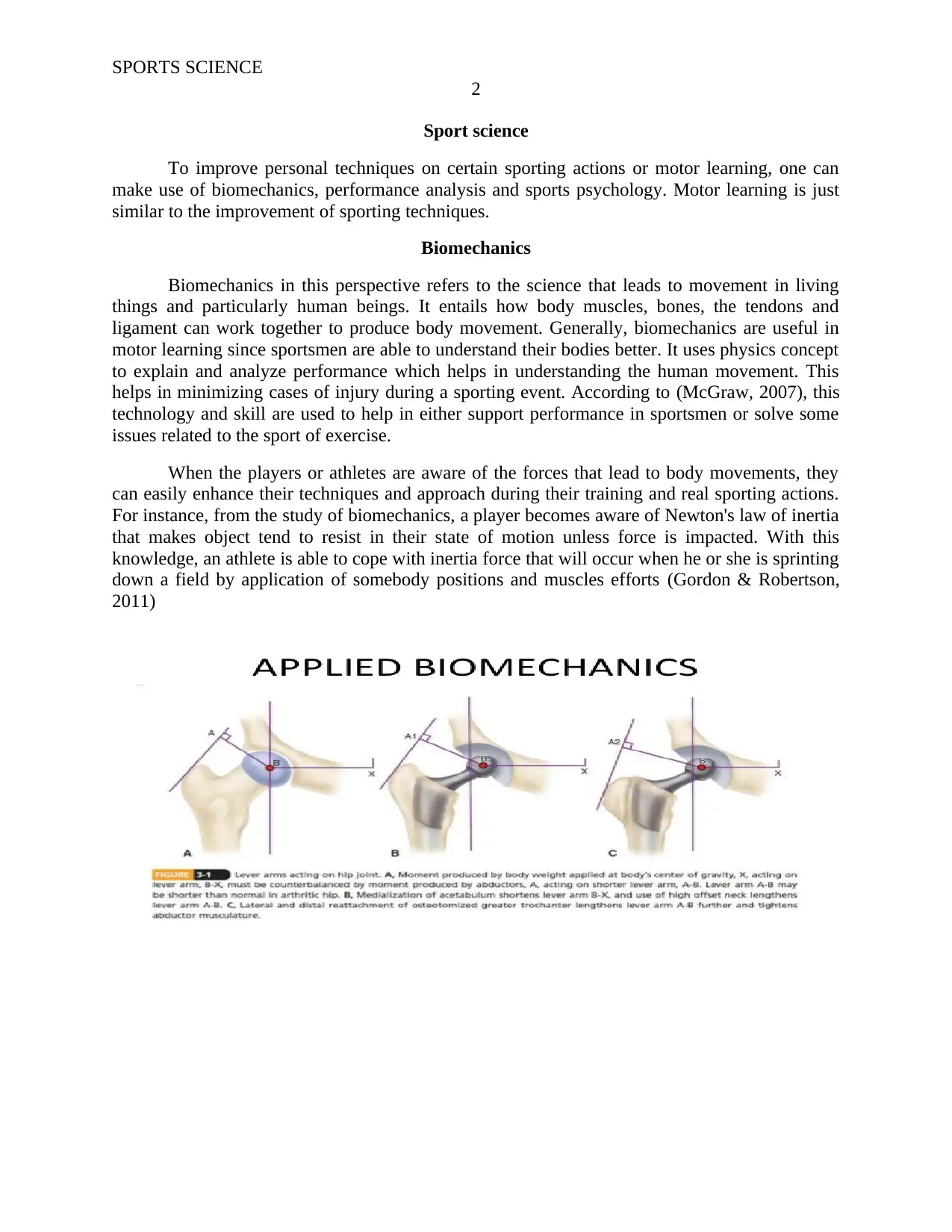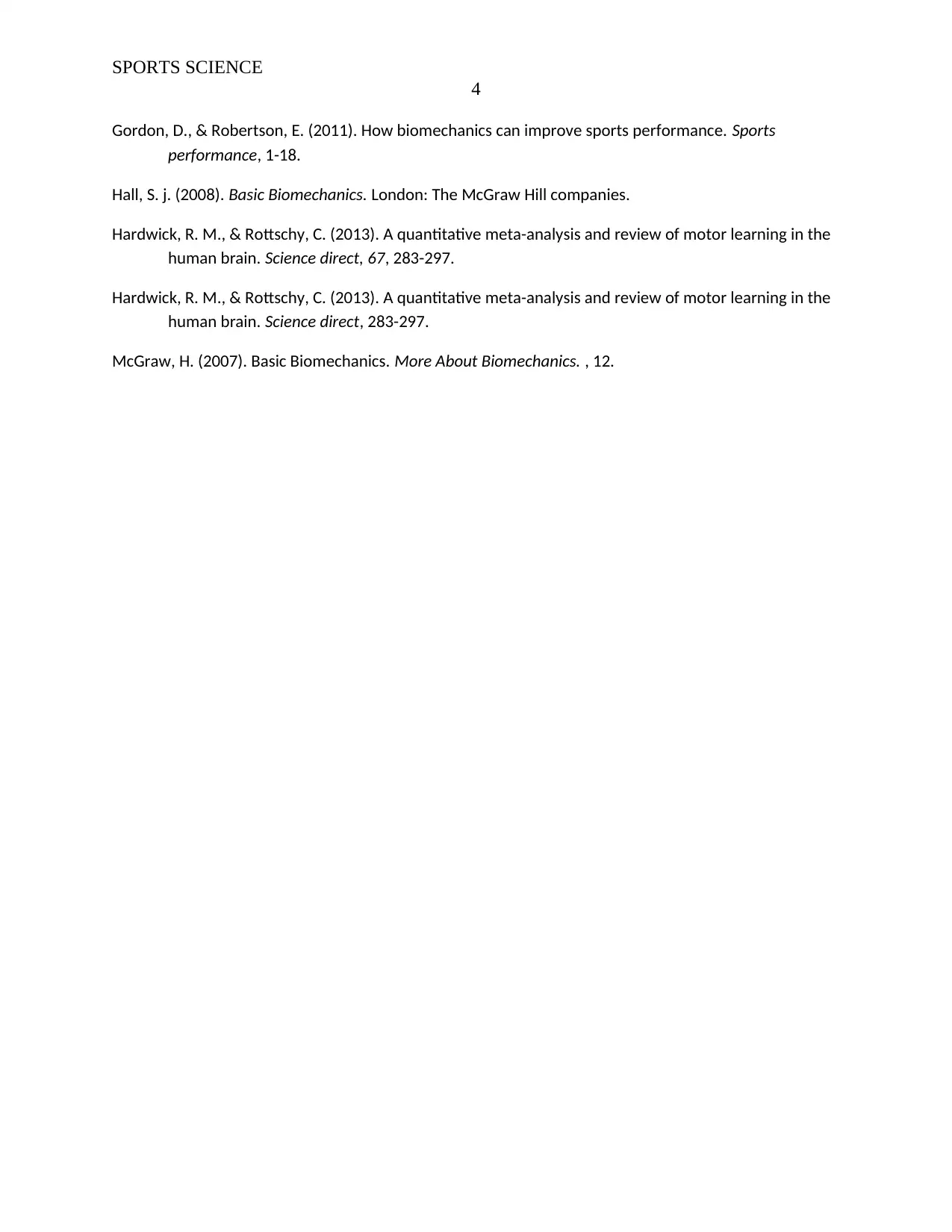Sports Science: Biomechanics, Performance Analysis, and Motor Learning
VerifiedAdded on 2023/06/10
|4
|561
|153
Essay
AI Summary
This essay examines the application of sports science principles, specifically biomechanics, performance analysis, and sports psychology, to enhance motor learning and improve sporting techniques. Biomechanics is presented as a tool for athletes to understand their body movements, minimize injuries, and optimize performance through the understanding of physics concepts like Newton's law of inertia. Performance analysis, utilizing technologies such as GPS and radar guns, aids coaches in providing data-driven advice for tactical and technical improvements. Furthermore, sports psychology, supported by neuroimaging studies, highlights the crucial role of the mind and brain in motor learning. The integration of these disciplines allows athletes to refine their techniques, enhance their tactical knowledge, and achieve better overall performance in their respective sports. Desklib offers a platform for students to access this and many more solved assignments.
1 out of 4








![[object Object]](/_next/static/media/star-bottom.7253800d.svg)